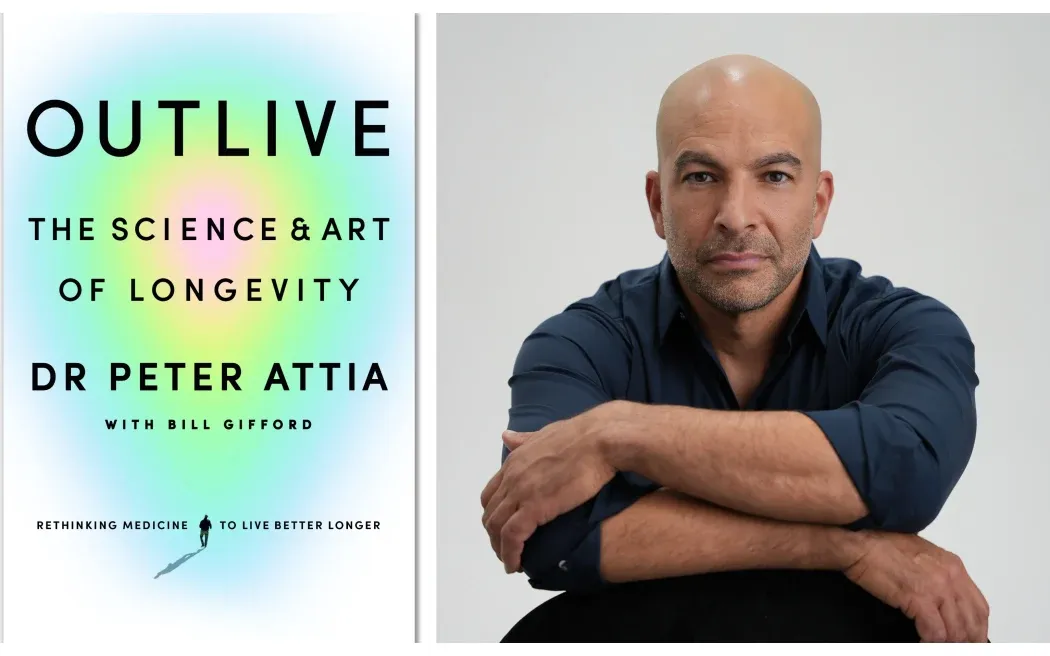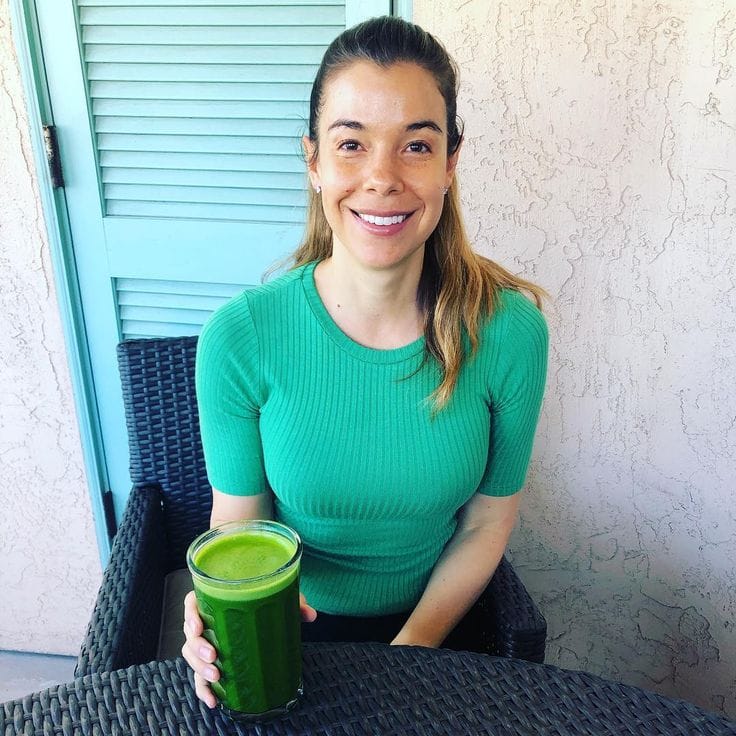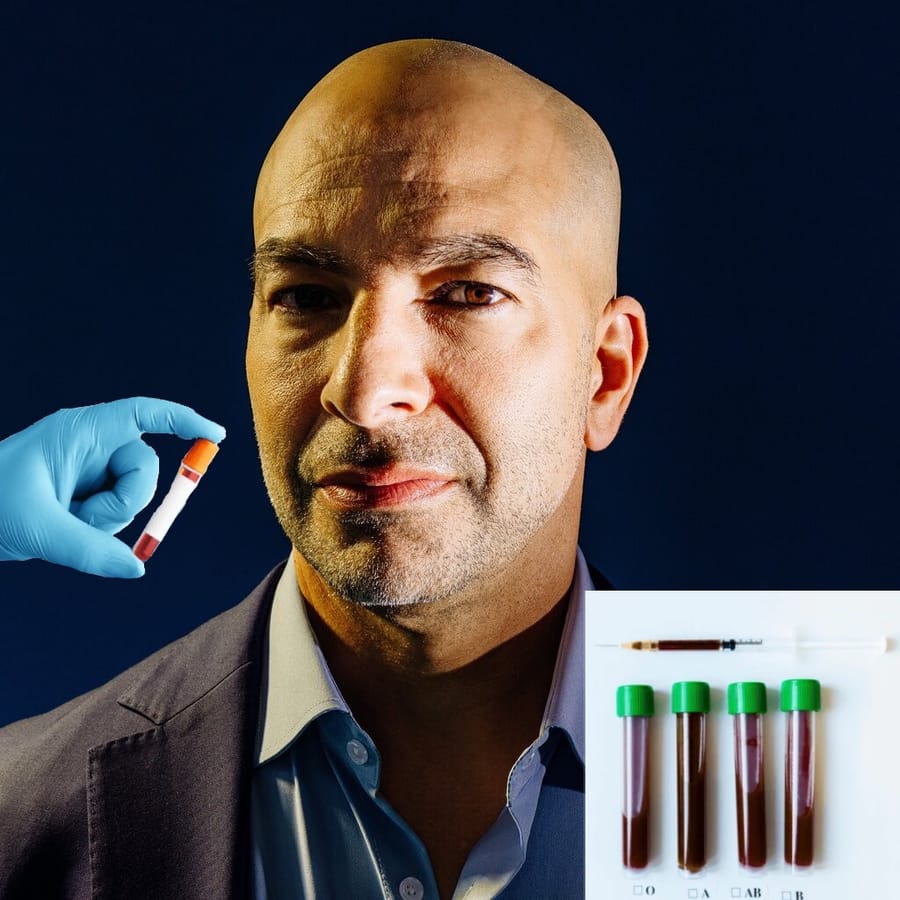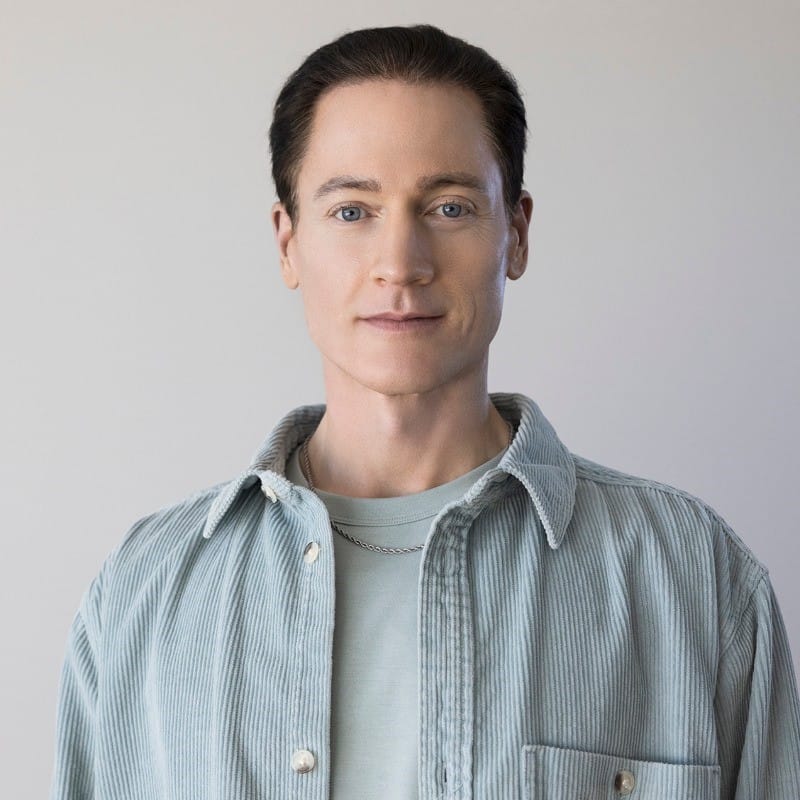Outlive is the bible on living a longer, better, and healthier life. If you can’t afford the $100K annually for Peter as your personal doctor this is the next best thing.
Table of Contents:
Who is Peter Attia and Key Concepts
Healthspan and Medicine 3.0
Avoiding Death
The Most Potent Longevity Drug
Exercise Pillars
Metabolic Health
Diet
Sleep
Emotional Health
Buy Outlive Here
Who is Peter Attia? and Outlive Core Concepts
First off, who is Peter Attia? He is a doctor, scientist, and educator focusing on the science and tools of improving human longevity and healthspan (we will discuss this term soon). He is the host of a popular podcast “The Drive” and runs a health practice consisting of high-profile and high-net-worth individuals where he focuses on improving these clients' long-term health outcomes. The good news is you don’t need to drop $100k a year to be his patient and reap all these benefits if you are willing to learn and implement some of the key strategies and protocols he shares in this book. Before we get started, always discuss any health-related topics with your doctor and make your own decisions as I am in no way a doctor or medical professional.
As we start discussing “Outlive” I want to focus on some high level themes and ideas before getting to the more practical takeaways as these ideas will be our bedrock for the practical tools and protocols discussed later. The first key takeaway from "Outlive" is to have agency over your health and well-being. In the end, no one else can take the actions needed for you to live a better and longer life. This mindset consists of being your own advocate and developing the skills to understand the scientific method and parse and weigh information sources. With these skills, which will serve you in many aspects of life, you can take control of your health at a higher level and have more targeted conversations with your doctor or health care provider. This really comes down to having some self-sufficiency in this domain and dedicating time and resources to your physical and mental health. Taking care of yourself is a necessity and one of the things that no matter how rich or successful you are you can’t fully outsource.
This means you should be your own primary advocate when it comes to your health yet also be self aware enough to know when to consult doctors and experts. These people are incredibly skilled and knowledgeable and the goal is not to replace or question them but to engage with them in a deeper way and be able to find the providers that align with your goals. Many people fall for the false confidence of the Dunning-Kruger effect so just remember a person who has spent their life dedicated to studying medicine probably knows more than a stranger online.
The next layer of understanding we need in order to move to the tools and concepts for living longer are two foundational concepts introduced in this book that I think should be a part of our collective vocabulary.

Healthspan and Medicine 3.0
The first concept is that of healthspan. Healthspan is a metric that defines not only how long you live, but also your collective health quality and ability to live the life you want. I like to visualize this as a graph with age on the X axis and overall health on the Y axis. This measure of overall health can be thought of as combining all aspects of health from things like blood markers to more physical things like one's strength, stamina, and cardiovascular output capacity. Healthspan is the area under this curve. For those having nightmares of calculus just imagine how having better health for longer will result in a greater healthspan compared to someone who has health issues earlier in life.
I think most people will agree we want to maximize healthspan over lifespan because if you can’t enjoy the things that make life exciting and enjoyable, what is the point? Luckily for us focusing on healthspan also correlates to a longer lifespan so you don’t have to choose.
My personal goal and that of Attia’s information in this book is to shift one's curve from a typical person (see red line) to one that slows the decline of health (see blue line) and gives us more years of health.
Healthspan
The second concept to touch on is the term Peter coins Medicine 3.0, and is an approach to medicine that focuses on prevention vs. treatment and personalized vs. generalized interventions. This concept resonates with me as our current approach to medicine is waiting until people are sick before starting any treatment. Unfortunately, by waiting irreversible damage has often happened and we find ourselves fighting the progression of a disease vs. preventing it from occurring in the first place. This seems backward to any other complicated system where preventive maintenance is the key to long-term and reliable function. Luckily we understand the common failure modes of the human body and with a medicine 3.0 approach we can utilize this information to target maintenance of our bodies informed by these risk factors.
One analogy I like for this concept is giving people a speedometer only after they get 2 out of 3 strikes for speeding before revoking their license forever. At this stage they are one speeding event away from losing the privilege of driving and unfortunately never had feedback on their speed previously.The current approach to medicine practiced by much of the world is similarly flawed in its approach and a switch to helping people throughout life and addressing issues before they cause major problems is something I hope we see gain more traction thanks to people like Peter Attia.
I can’t help myself with these analogies but a second one that speaks to my inner engineer is if we treated planes, cars, and other complicated mechanical systems like our current approach to medicine. In this analogy we would only fix a plane after it had an engine fail or a car with a blown engine and instead of changing oil or some minor maintenance task, we need a whole new engine or other drastic fix that could have been avoided with proper maintenance and preventive care. This need for maintenance and care of a much more complicated system like the human body seems obvious in this light.
Avoiding Death
With these key frameworks in mind, let's jump into the major lessons I took from this book starting with what Peter calls the 4 Horsemen, which are the 4 diseases that kill an overwhelming majority of humans. By understanding these most common diseases that reduce our healthspan and lifespan, we can tailor our approach to health to reduce the likelihood of succumbing to these killers.
These diseases are:
1. Heart disease
2. Metabolic disease/dysfunction (like type 2 diabetes)
3. Cancer
4. Neurodegenerative disease (like Alzheimer's)
These four diseases are responsible for 80% of deaths of people over the age of 50 and where we should focus efforts on increasing our healthspan. Eventually, if we live long enough, we will all battle some elements of these diseases, yet to maximize our healthspan, we should prolong our years without these diseases and focus on the most effective ways to keep them at bay. These each have their own specific vectors to reduce risk, and "Outlive" discusses the specific lifestyle changes, testing protocols, and pharmacological interventions we can use to accomplish this.
Now that we are all filled with existential dread and contemplating our own mortality, let's look at what tools and protocols we have to slow our progress towards these horsemen and live better and longer lives.
The Most Potent Longevity Drug
The obvious place to start is exercise which in "Outlive" is called the single most potent longevity drug known to man. This is the most powerful lever we have to improve healthspan according to Dr. Attia. Exercise reduces the likelihood of death across all the 4 horsemen diseases, builds strength and resilience to help us age more gracefully, keeps our body functioning optimally, and helps maintain and improve positive mental health.
Some great statistics that demonstrate the potency of exercise are that going from 0 to 90 min of exercise per week reduces all-cause mortality by 14% [1], and that 77% of Americans don’t exercise at all. Another study from Harvard’s Dong Hoon Lee showed those who performed two to four times above the recommended amount of moderate physical activity had a 26% to 31% lower all-cause mortality and a 28% to 38% lower risk of cardiovascular disease mortality. On top of that, there was an observed 25% to 27% lower risk of non-cardiovascular disease mortality [2]. These results are mind blowing and show that the more exercise we get the less likely we are to die from all causes. Parallel research also shows the many life quality improvements we also get from a consistent exercise routine.
Due to these findings, exercise should be the cornerstone of one's focus on improving healthspan due to its positive impacts across all aspects of health and its high potency ability to do so. If we were to have a drug with all the benefits of exercise it would be beyond a miracle drug and so impactful all other drugs would pail in comparison. Luckily for us we all have access to these benefits today and without any serious costs or barriers to access. Exercise is something no matter how rich or powerful you are can’t be outsourced.
In terms of exercise types Peter breaks these down into the following four main categories. There often is training overlap between these categories, but "Outlive" focuses on training sessions that target these specific regimes and their targeted adaptations.
Exercise Pillars

These 4 pillars of exercise are:
1. Zone 2 training: Long-duration endurance at a low intensity. This training type builds one's aerobic base, improves mitochondrial function and metabolic resilience. Peter recommends this type of workout 4 times a week with sessions ranging from 45 min to 60 min. These workouts generally would be running, cycling, swimming, or any cardio you enjoy. The best method to know if you are within a Zone 2 intensity level is to do “the talk test” where you see if you can hold a conversation at a given intensity level. The conversation may be uncomfortable to continue but is a good proxy for when in zone 2. You can also find a target zone 2 intensity level with a heart rate monitor. Your zone 2 heart rate should be around 180- your age. I find that my heart rate monitor on my smartwatch is a good way to ensure I do not venture too far outside zone 2 during these workouts.
2. VO2 Max training: Focus on maximum effort anaerobic output. This high intensity training helps with oxygen extraction and overall cardiovascular health and capacity. Peter says that an individual's V02 Max is the single best predictor of cardiorespiratory fitness and a great metric to track one's progress in this domain. Peter also states in Outlive that bringing your VO2 max from 'low' (bottom 25th percentile) to 'below average' (25th to 50th percentile) is associated with a 50% reduction in all-cause mortality. When you go from 'low' to 'above average' (50th to 75th percentile) the risk reduction is closer to 70%! [3]
Peter recommends V02 Max training 1 time a week for a session length of 30 minutes. In these sessions one does max effort output for 3-4 minutes with 3-4 minutes of rest or very low intensity effort in between. I like to do this training with sprint sessions, bonus points if uphill, with a light jog or walking in between. This training session is meant to be max output and should be uncomfortable.
3. Strength training: The third exercise pillar of Peter's longevity formula is strength training. It helps us build and keep muscle, function well as we age, increase bone density, and reduce injury risk.
We all start losing muscle and the ability to create new muscle as we grow older. Strength training directly slows this occurrence and sets us up to have proper muscle mass later in life. In “Outlive” Peter has a great analogy of one's muscle mass being like retirement savings. We all know we need to save money for retirement and similarly we should bank muscle mass and strength for our later years in life. Eventually we will be living off the muscle we created while younger. This muscle mass and strength is critical as we get older as it allows us to function independently, continue to engage in health promoting activities like exercise, and greatly reduces our risk of injury from things like falls. As an example of why this matters, a fall resulting in a broken hip causes a 2-3 increase in the risk of mortality for older individuals [4]. Having the muscle and bone strength to prevent such a fall or reduce chances of breaking a bone can make a big difference in life expectancy and overall quality of life.
A more personal example, as an athlete that enjoys spending my time: skiing, biking, climbing mountains, whitewater kayaking, and other similar activities, strength is paramount as it will allow me to live the life I want and engage in the things I love as I age. Peter has a section in “Outlive” on a similar concept called the “Centurion Olympics” where he focuses his training around things he still wants to be able to do in later years of life. For example, I want to be able to ski for a day, do a 4+ mile hike with 1000 ft of climbing, pick up my grandchildren, and travel independently in my 90s. By having specific goals in mind I can tailor my program around these activities.
In terms of training for these benefits Peter dedicates 3 strength training sessions per week of around 45-60 minutes each, in these sessions he makes sure to target all the major muscle groups weekly. These workouts should focus on heavy loads and lower rep ranges around 4-12. There are a ton of resources on building strength focused programs online so I will skip the details but personally like big compound movements to start these sessions with more targeted work on individual muscles after these are complete.
4. Finally, I was really glad to see Peter mention dedicating time to stability training as we must also be able to move properly for all our other training, as well as to avoid injuries and imbalances. Peter doesn’t go into as many specifics here but mentions spending an hour plus a week on stability work. I imagine this as being things like training scapular stability, core stability, working with functional movement patterns, and having strength in end ranges of motion. This is something I am always dedicating time to and have seen firsthand the injuries and issues that arise when this is neglected.
To summarize this section below is a weekly exercise routine based on “Outlive”
- Monday: 10 minutes stability, 60 minutes lower body strength
- Tuesday: 10 minutes stability, 60 minutes zone 2
- Wednesday: 10 minutes stability, 60 minutes upper body strength
- Thursday: 10 minutes stability, 60 minutes zone 2
- Friday: 10 minutes stability, 60 minutes lower body strength
- Saturday: 10 minutes stability, 60 minutes zone 2, 30 minutes zone 5
- Sunday: 10 minutes stability, 60 minutes zone 2, 60 minute upper body strength
Metabolic Health
With an understanding of the importance of exercise, the next thing I wanted to talk about is addressing metabolic health and how critical this is to one's healthspan. To get started let’s quickly look at how the body manages blood sugar as it’s an incredible system that has many negative health impacts when out of whack.
At a very high level, we produce insulin that pushes the glucose in our blood into fat and muscle tissue which titrates (or precisely controls) the amount of glucose in our blood to a healthy range. In the book, Peter explains how our body only has a single teaspoon of glucose in circulation at a given time and how sensitive and precise our glucose regulation system is. For example, prediabetes is defined as only a 25% increase in glucose in our blood or a ¼ teaspoon more flowing in the body. The human body is incredible at maintaining homeostasis!
This is a big deal as 38% of Americans have prediabetes and 50% of people over 65, according to the National Institute of Diabetes [8] [5]. This has major longevity and health impacts as insulin resistance increases the chances of cancer risk 4-12 times, Alzheimer's risk by 3-5 times, and heart disease by 4-6 times (The variation here is from different sources). Mechanistically when we have too much glucose in our blood our blood vessels get damaged, nerve cells become damaged, and fat winds up in organ tissues, like the liver, where it does not belong.
“Outlive’s” chapter on metabolic health has me paying much more attention to my insulin / glucose response and I view this as a very high leverage area to improve my healthspan. I have recently started to monitor my blood glucose levels to understand how I react to different foods and have some data to monitor my metabolic health as I make lifestyle changes and age.
Diet
To avoid metabolic dysfunction the key things to focus on are exercise, sleep, and Diet. Refreshingly "Outlive" doesn’t focus on a specific diet as the research on diets is messy and unclear. Diets, which is a term Peter admits to hating, are also highly individualized and often take on such a religious fervor that discussing them evokes tribalistic tendencies and stops any conversation in its tracks. Instead of thinking of diets as changes to what we eat for a short duration timeframe we should focus on nutritional and lifestyle principles that improve our metabolic health and are sustainable for the long term.
Peter has some rules in "Outlive" that align with my own experience and research in this area and can be summarized as the following:
- Focus on energy balance first and get your consumed energy intake matching the energy needs of your goal of maintaining, losing, or gaining weight. Excessive calories compared to energy needs are a driver of all the horsemen diseases and maintaining a healthy body weight is paramount to longevity and healthspan. I could spend many pages discussing the nuisance around this topic but for overall energy balance focusing on calories in vs. calories out is a fine heuristic.
“Outlive” says energy balance can be achieved by three main levers: caloric restriction, diet or food type restriction, and time restriction (like intermediate fasting) [6] . These all aim at changing overall energy balance and one should try and find one of these methods that works best for them and their lifestyle.
- Never be too dogmatic about any diet. The human body evolved to allow great flexibility of fuel sources and oftentimes going too far in any one direction is less optimal than having a more balanced approach. For example, Peter used to be a big advocate of Ketogenic diets and since has changed his views and moved away from this to a more balanced diet across macronutrient types.
- Get adequate protein aiming for a daily intake of 0.8 to 1.0 gram per pound body weight. Protein is especially important if you are exercising and will allow the body to have the building blocks for muscle growth and repair. This amount of protein is more than you might expect so I recommend tracking protein intake for a week to better understand what this amount looks like in your life.
- Get adequate fiber. I do not recall if "Outlive" dives into this specifically but the recent research on gut microbiome health shows the importance of fiber. At a very high level fiber is a prebiotic and keeps your friendly gut microbes happy and healthy and also has other important functions like regulating glucose spike magnitude and reducing APoB which is a key driver of cardiovascular risk. I aim for 30-40 grams per day but personally struggle with hitting this target and am still have work to do.
- Get adequate micronutrients through eating vegetables and fruits. Revolutionary stuff!
- Avoid what Peter calls the SAD (standard American diet). I think it’s safe to say eating fewer processed foods, especially simple micro-nutrient void carbohydrates, is a good idea. Avoiding these foods helps keep blood glucose in a healthy range, fills in one's calorie intake with foods that have micronutrients and fiber, and avoids potential harmful and inflammatory ingredients in many processed foods. Peter mentions if he could cut one thing from everyone's diet it would be high fructose sugary drinks like juice and soda.
If you are interested to see what supplements Peter takes to add to his daily routine I have an article outlining this HERE
Sleep

Now that we have our diets and energy balance dialed in, let's look at the next critical element of health, sleep. In "Outlive," Peter himself tells how he used to have a “I’ll sleep when I’m dead” mentality and how he has made a one-eighty on this idea since his medical residency days. Peter outlines how getting adequate sleep cascades into all aspects of health and how research shows how proper sleep reduces the risk of all of the horsemen diseases. As an example, lack of sleep will greatly change one's insulin sensitivity regardless of health and exercise. Research shows how a string of nights without proper sleep can lead to elevated glucose levels and the degradation of many health markers. [7]
Sleep has made it evolutionarily through millennia for a reason even at a massive cost to time for resource gathering and chances of predation. It allows us to form memories, repair damage at a cellular level, is when hormones like HGH are released, and even is when our brain undergoes its waste removal processes. All these and many more critical functions happen when we sleep and these processes are paramount to overall health and keeping our body and minds in peak operating order. Like Peter, I also used to sacrifice sleep for work and things I deemed more important and I saw this as an advantage over those suckers sleeping their lives away. However, over the last couple of years I have made sleep a priority and can say anecdotally that I am accomplishing much more and feeling better than ever. The fallacy in play here is that we assume productivity is only a time bounded problem where in reality a large part of performance is based on how good you are feeling and how focused you are during a day or session of work. You can think of an equation where work output, exercise capacity, or wherever goal you are chasing looks like.
Output = ∫ Time Dedicated * (Productivity Factor) dt
The key point here is that this “productivity factor” which represents how we feel and how hard we can focus is a key parameter when looking at our work output over a given timeframe. Sleep is a proven way to increase this productivity factor to increase work output and quality while also improving many other health related factors.
The best practices for better sleep outlined in “Outlive” are:
1. Get adequate duration sleep (7.5 to 8 hours seems like a good target for most people)
2. Try to not eat a large meal 3 hours before bed.
3. Avoid alcohol, cannabis, and other substances that impact sleep when possible. If you indulge in these, aim for earlier in the day.
4. Avoid caffeine in the afternoon. I personally try to have no caffeine after 1 pm which has made a big difference in my personal sleep struggles.
5. Get warm before going to bed with a sauna, shower, or hot bath.
6. Keep the room cool <68F when actually sleeping.
7. Darken your room or use an eye mask. I personally like the MZOO one on amazon
8. Unwind a few hours before bed and develop a good pre-sleep routine. This should include reducing stimulation like browsing social use and looking at work emails and engaging the parasympathetic nervous system. I like to force this by reading fiction in the hour leading up to sleep.
9. Avoid bright lights prior to bed. Blue hued lights are the worst
Emotional Health
Finally, Peter concludes his book with a chapter on emotional health which I am grateful he included. Peter is vulnerable in this section of the book and discusses his personal struggles with mental health and how bad coping mechanisms and avoidance of some underlying issues almost cost him his marriage. I found his transparency brave and believe it helps normalize the struggles many of us have in this critical domain of health and life quality. In the end, what is the point of living longer and with better health if you can’t enjoy it or you are not happy with this added time and potential? I have a lot of thoughts on how this is lacking from many discussions on longevity and think many people in that community focus too much on the pure longevity side of the equation vs. building a life that is amazing and optimized with this factored in.
I like to think about this as another curve in your healthspan graph where your well-being/happiness is another line and your quality of life can only be measured from the limiting (or lowest) curve. I personally try to remain cognizant of this and try to build the happiest and healthiest life simultaneously and find a balance that maximizes this function. In terms of tools to improve emotional health Peter mentions therapy, working on one self talk, exercise, and Dialectical Behaviour Therapy.
The final thing Peter recommends for longevity and increasing health span is subscribing to my page for more content to improve your life and health. Ok he doesn’t actually mention that but if you enjoyed this piece please let me know, subscribe, or share with friends.
Overall, "Outlive" and Peter's work is incredible and worth checking out directly. I hope this article helps give you some actionable takeaways from this book or remind you of some of the key points. Let me know if you would like more details on any aspect covered here as there is a lot of depth still to explore. Finally thanks to Peter Attia for writing this impactful book and changing the dialog on health and longevity.
Related Articles
- Peter Attia Supplement List
- Rhonda Patrick Supplement List
- Andrew Huberman Supplement List
- Bryan Johnsons Supplement List
References
[0] Outlive, Peter Attia
[1] https://link.springer.com/article/10.1007/s11482-021-09976-w
[2]https://www.ahajournals.org/doi/full/10.1161/CIRCULATIONAHA.121.058162
[3]https://peterattiamd.com/category/exercise/vo2-max/#:~:text=Simply%20bringing%20your%20VO2,is%20closer%20to%2070%25!
[4] https://www.ncbi.nlm.nih.gov/pmc/articles/PMC3118151/
[5] https://www.cdc.gov/diabetes/data/statistics-report/index.html
[6]https://peterattiamd.com/my-nutritional-framework/#:~:text=One%20thing%20is%20for%20certain,pattern%20of%20eating%2C%20the%20better.
[7] https://pubmed.ncbi.nlm.nih.gov/20371664/
[8] https://www.cdc.gov/diabetes/data/statistics-report/index.html






